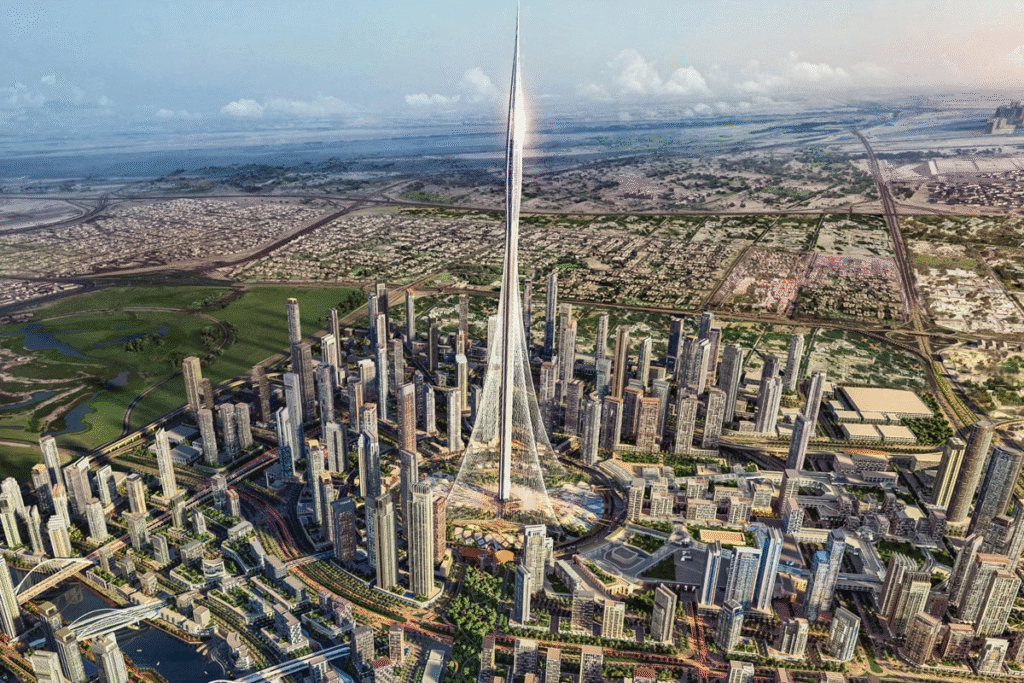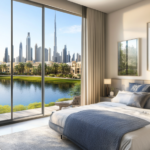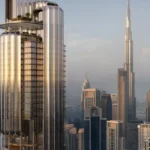Now Reading: Dubai Mega Project Prices Plateau What Investors Need
-
01
Dubai Mega Project Prices Plateau What Investors Need
Dubai Mega Project Prices Plateau What Investors Need

Dubai mega project prices have been the talk of the town for years, attracting global investors, high-net-worth individuals, and property seekers looking to cash in on the UAE’s booming real estate scene. From luxury towers on Sheikh Zayed Road to waterfront developments near Palm Jumeirah, these projects have driven much of Dubai’s growth story. But now, signs are emerging that the hype may be cooling. Prices in certain mega projects appear to be plateauing, raising an important question: What does this mean for your investment?
Understanding the Plateau in Dubai Mega Project Prices
For much of the last three years, Dubai’s real estate market has been on fire. Property values surged by more than 60% from 2022 to early 2025, fueled by foreign investment, population growth, and a wave of high-profile launches. Mega projects like Downtown Dubai, Dubai Marina, and newer communities along the Creek and Jumeirah Bay Islands became hotspots for both investors and end-users.
However, analysts are now reporting that some of these Dubai mega project prices are no longer climbing at the same pace. Instead, they are flattening, signaling the beginning of a plateau. This doesn’t necessarily mean a crash is coming—it could reflect a maturing market where values stabilize after a period of explosive growth.
Why Dubai Mega Project Prices Are Plateauing
Several factors explain why Dubai mega project prices are showing signs of leveling off:
- New Supply Flooding the Market
Dubai is expected to deliver over 200,000 new residential units in the next two years. With so many properties entering the market, supply is catching up with demand. - Affordability Ceiling
Prices in prime areas have reached levels where many buyers—especially middle-income expatriates—are priced out. This natural affordability ceiling slows growth. - Investor Caution
While demand remains strong, global economic uncertainty is making investors more cautious. They are waiting to see whether current values can hold before committing to high-ticket purchases. - Shift in Demand to Affordable Areas
Buyers are increasingly drawn to more affordable projects in Sharjah, Ajman, and northern Dubai suburbs, where prices offer better value. - Maturing Market Dynamics
After years of rapid appreciation, Dubai mega project prices are entering a consolidation phase, typical of real estate cycles.
What This Means for Investors

If you own property in one of Dubai’s major developments, a price plateau can feel unsettling. But experts caution against panic. Plateauing prices are not necessarily negative; in fact, they can be a sign of a healthier, more balanced market.
- Stable Returns: Investors may not see double-digit annual growth, but rental yields remain attractive, often between 5%–7% in key areas.
- Reduced Speculation: A more stable market discourages risky flipping and promotes long-term, sustainable investment.
- Stronger End-User Market: As speculative demand cools, genuine buyers—families and professionals—become the backbone of the market.
- Opportunity in Timing: For new buyers, a plateau could be the right time to enter without overpaying at the peak.
Key Mega Projects Showing Price Stabilization
While not all Dubai developments are experiencing the same trends, certain mega projects are leading the plateau phase:
- Downtown Dubai – Prices for premium apartments around Burj Khalifa have slowed after years of steady growth.
- Dubai Marina – Once the city’s most active secondary market, rental yields remain strong but sales prices are flattening.
- Palm Jumeirah – Luxury villas and apartments continue to attract ultra-wealthy buyers, but growth rates have cooled.
- Dubai Creek Harbour – New supply is balancing demand, creating stable prices across multiple phases.
Meanwhile, areas like Jumeirah Village Circle (JVC) and Dubai South are still seeing growth, largely because of affordability and demand for mid-market housing.
Rental Market Still Strong
Even as sales prices stabilize, Dubai’s rental market remains one of the strongest in the world. Rising demand from expatriates and corporate relocations has pushed rental values to record highs in some communities. This is good news for investors who rely on rental yields rather than short-term capital gains.
According to recent data, average rents in prime locations increased by nearly 20% year-on-year in 2024, while secondary markets saw even higher gains. With Dubai’s population expected to reach 6 million by 2030, demand for rentals will remain a key driver of returns.
Lessons from Past Market Cycles
Dubai has experienced real estate cycles before. The global financial crisis of 2008 led to a sharp downturn, followed by recovery during Expo 2020 and beyond. What makes today different is the emirate’s economic resilience and diversification. Tourism, logistics, finance, and technology are all fueling demand for housing, making the Dubai mega project prices more sustainable than in past cycles.
The Bigger Picture: A Healthy Market Correction
Some experts argue that the current plateau in Dubai mega project prices should be viewed as a “healthy correction.” Instead of runaway prices leading to instability, the market is finding its equilibrium. This prevents bubbles and ensures long-term investor confidence.
- Balanced growth means investors can expect steady returns without extreme volatility.
- Sustainable demand from genuine buyers and renters supports long-term stability.
- Resilience to external shocks makes Dubai’s property market more reliable for global investors.
Investment Strategies in a Plateauing Market
So, how should investors react to this new reality? Here are some strategies to consider:
- Focus on Rental Yields – Rather than chasing capital appreciation, target communities with strong rental demand.
- Diversify Your Portfolio – Spread investments across both prime and emerging communities to balance risk.
- Look for Off-Plan Discounts – Developers are offering attractive payment plans and incentives in new projects.
- Prioritize Long-Term Growth – Think beyond immediate gains and consider areas with upcoming infrastructure and connectivity improvements.
- Consider Commercial Properties – With business growth in Dubai, warehouses and office spaces are gaining traction as investment assets.
Impact on End-Users
For families and residents, plateauing prices may actually be a positive development. It gives end-users more breathing space to buy homes without the fear of rapidly escalating prices. Many are finding opportunities in mid-market areas where developers are offering modern, affordable communities.
Outlook for the Next Two Years
Industry experts predict that Dubai mega project prices will remain stable over the next 24 months. Some areas may see minor corrections, while others could continue moderate growth. The large pipeline of new units will test demand, but Dubai’s growing population, investor-friendly policies, and global appeal should ensure resilience.
Long-term, Dubai continues to offer one of the most compelling real estate stories globally. Its status as a business and tourism hub, combined with high rental yields and tax-free income, will keep attracting investors even if prices are no longer skyrocketing.
Final Thoughts
Dubai mega project prices are plateauing, but this is not the end of the city’s property boom. Instead, it marks the beginning of a more sustainable, balanced market that favors long-term investors and end-users alike.
While the era of rapid double-digit appreciation may be slowing, Dubai remains a global investment hotspot. For savvy investors, this plateau represents an opportunity—not a threat. By focusing on rental yields, diversifying portfolios, and identifying emerging communities, investors can continue to benefit from Dubai’s dynamic real estate market.
The message is clear: The hype may be cooling, but the fundamentals remain strong. Dubai mega project prices are stabilizing, and that could be exactly what ensures long-term growth and stability in one of the world’s most exciting property markets.
Do follow us : Instagram



















